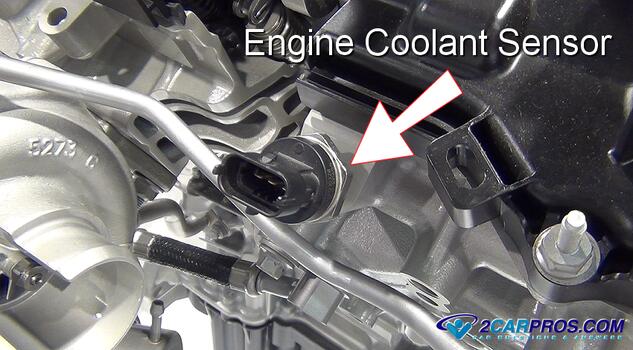Introduction
An automotive engine coolant temperature sensor, (ECT) sensor, or sometimes called a cylinder head temperature sensor is used to generate feedback information to the PCM while make adjustments to the fuel mixture, cooling fan operation and ignition timing. When this sensor goes bad it can cause various issues that we will go over in the following guide which outlines the symptoms of a bad engine coolant sensor, helping you diagnose, address and repair potential problems.
Symptoms of a Failed Engine Coolant Temperature Sensor
1. Check Engine Light
The most popular symptom of the bad coolant temp sender is the check engine light has been triggered. This is because the engine computer is programmed to recognize when there is a problem with the sensor electrical circuit, or if the coolant sensor itself is out of range. To confirm the failure an engine code scan will need to be preformed.
2. Engine Overheating
The radiator cooling fan operation is triggered by the engine computer to help cool down the engine once it has reached its maximum preferred temperature, if the range of the coolant temperature sensor is off the computer will think the engine is running cold and not turn the fans on, leading to the subsequent engine over heating condition.
3. Hard Starting
Because the engine temperature sensor is responsible for data relating to the combustion chamber fuel-air ratio which will vary from hot to cold, the engine computer may deliver too much or to little fuel. Either of these conditions will make the engine hard to start, especially in cold weather.
4. Bad Fuel Economy
Since the engine fuel mixture can be adjusted by the coolant sensor via the PCM, additional fuel can be delivered as the short and long fuel trims adjust to achieve balance which can lead to poor gas mileage.
5. Rough Engine Idle
The combustion engine must run on a fuel ratio of 14.7 to 1 (fourteen parts of air to one part fuel), the coolant sensor can change this mixture and cause the engine to idle rough and unevenly which is most noticeable when the vehicle is at a stop. This is because the engine most susceptible to proper fuel-air mixture at idle for smooth operation and will produce the aforementioned rough idle condition.
6. Dark Smoke from Exhaust System
A side effect of a bad coolant sensor is excessive fuel, as you know from the above symptoms, the end result of this is black smoke from the exhaust system tail pipe. This is because the combustion process must be balanced to complete the fuel burning process and if not, black smoke will result as excess fuel is burnt.
7. Smog Test Failure
Emission testing is designed to keep our air clean for a healthier environment, which can be required by each state or country bi-annually. This test is deigned to "flag" potential health risks and force the car owner to have the repairs performed. If you fail an emissions test, the ECT sensor could be the culprit. High levels of hydrocarbons (HC) and carbon monoxide (CO) are indicators of an incorrect air-fuel mixture.
Conclusion
A shorted engine coolant temperature sensor will cause a variety of engine performance issues, from poor fuel economy to engine overheating. Understanding these symptoms will help you make repairs or understand what needs to be done to fix the issue ensuring your engine runs smoothly and efficiently.
Credits
This guide knowledge base was created by the 2CarPros Team, and by Ken Lavacot: Automobile repair shop owner and certified master automobile technician of over 30 years. If you have question or need help please ask one of our experts we are happy to help. Please visit our 2CarPros YouTube Channel for additional car repairs.




